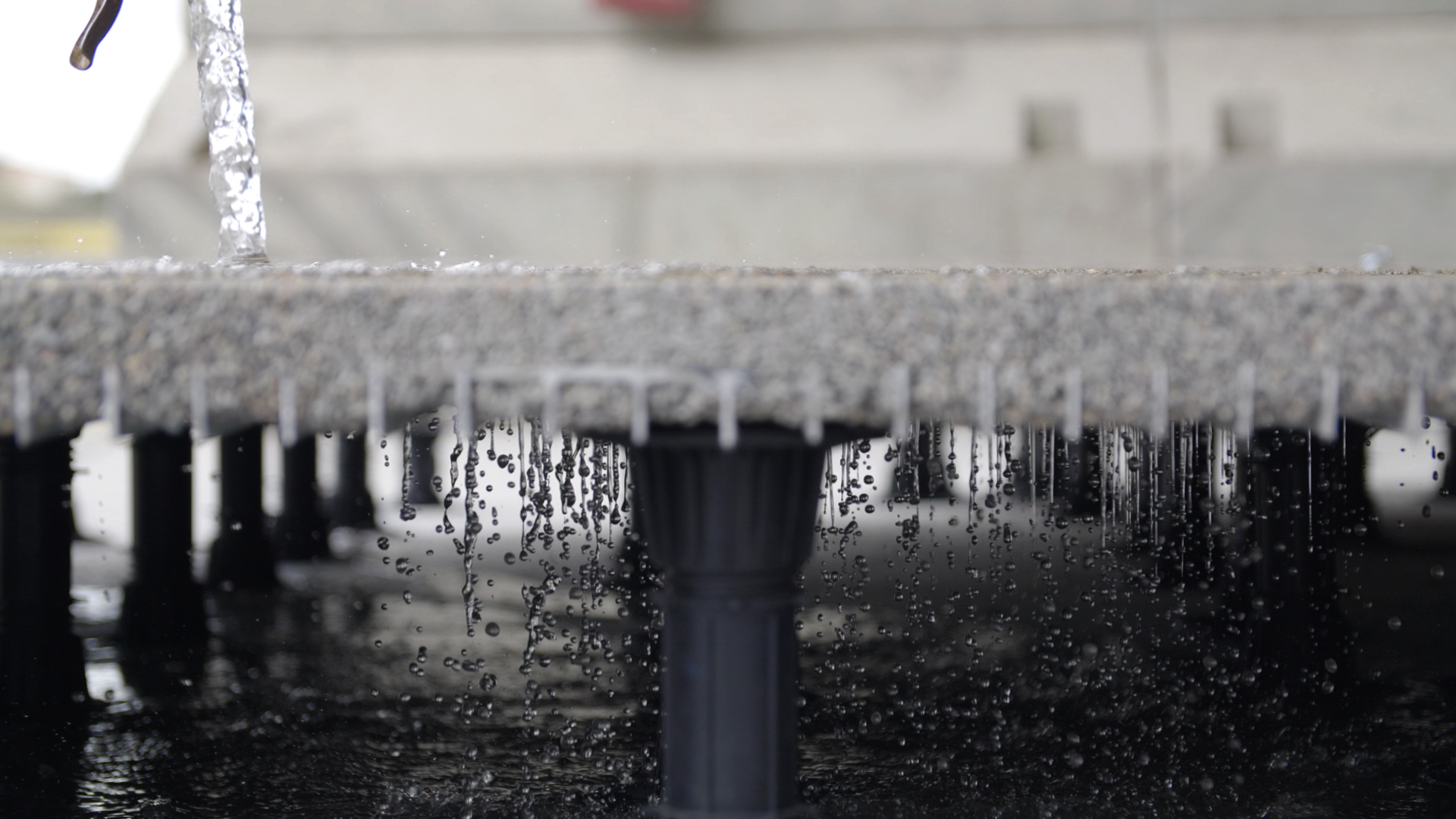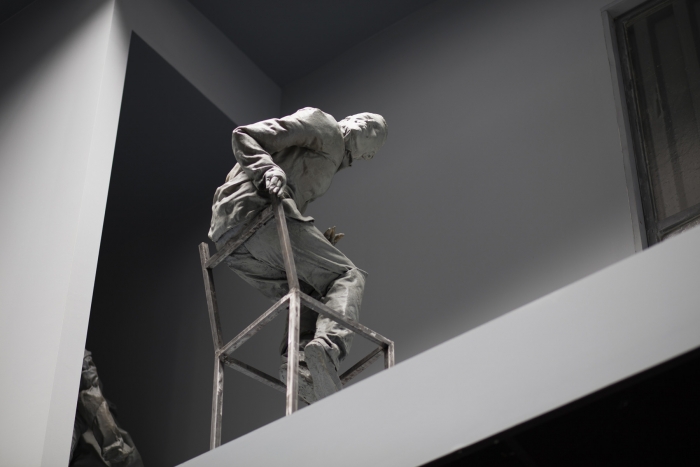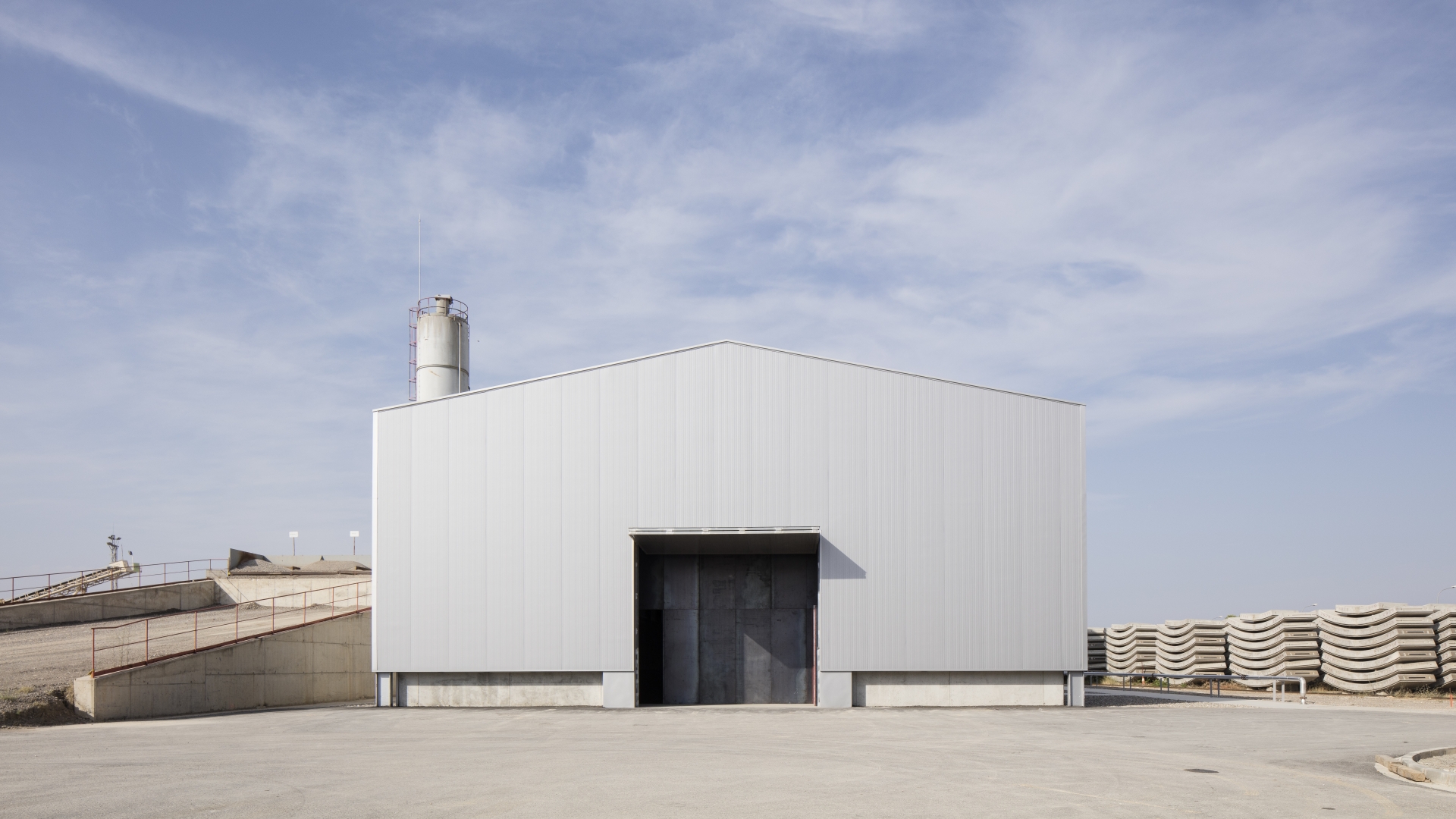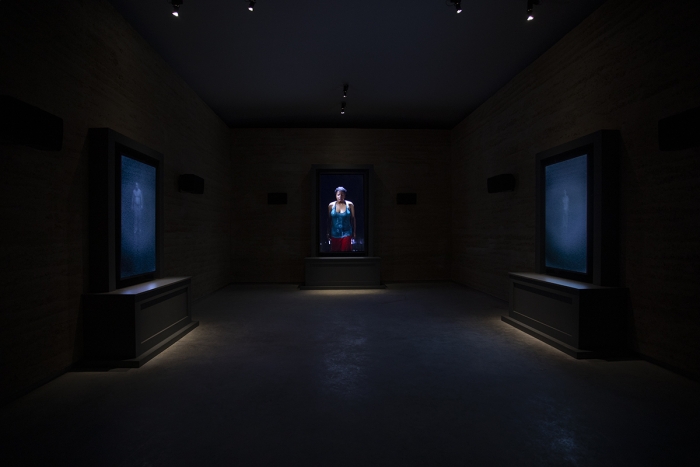The artist Cristina Iglesias, awarded the Architecture Prize by this prestigious British institution, has produced an ephemeral art installation in the Annenberg Courtyard for summer 2022.
The installation “Wet Labyrinth (with Spontaneous Landscape)” consists of a labyrinth covered in vegetation, with subtle shoots of water creating a wet atmosphere and, at the same time, an immersive experience mixing reality, fiction and reflections.
The properties of the floor, designed specifically for this purpose by Sorigué alongside the artist’s studio, allow water falling on the installation’s surface to be reused and re-pumped.
The Sorigué Foundation, which includes Cristina Iglesias’ work “Vegetation Room XII” in its collection, has supported the project.
The Sorigué business group has developed a customised draining floor for the site-specific exhibition “Wet Labyrinth (with Spontaneous Landscape)”, by the artist Cristina Iglesias and exhibited at the Royal Academy of Arts (London) until 21st August.
The work, which has the collaboration and support of the Sorigué Foundation’s PLANTA project, forms a labyrinth where vegetation flourishes and drops of water fall continuously to the floor, suggesting the passage of time and changes to landscapes.
The draining floor, forming the surface where visitors move through and access the installation, has been specifically created for the work by Sorigué’s Material Development Department and the artist’s studio, from a mixture of aggregates tested and selected in partnership with the artist and the Calcel Rob product: a polyurethane-based resin developed by the business group for use in draining and decorative floors.
“This project has allowed us to combine our desire to give back, embodied by the Sorigué Foundation, and for innovation, as can be seen in all Sorigué’s activity. We place all our knowledge and specialisation in developing floors to serve culture and art”, says the Head of the Sorigué group, Ana Vallés.
The floor’s design meets the project’s specific needs. Jordi Albareda, the technical director of the Materials Department, explains: “In the lower part of the floor, there is a tank which provides water to the entire installation. In turn, any excess water filters through the draining floor and, therefore, is not wasted. Thanks to the composition of Calcel Rob, water can be reused and re-pumped to the installation’s surface.”
Sustainable materials and processes
For the artist Cristina Iglesias, it was very important for all the materials and processes in the project to be aligned with the concept of sustainability: “Art is an essential tool for communicating the need to value and protect our environment and its landscapes. The installation meets this desire to raise awareness of certain environmental problems. Therefore, developing the work’s different materials and systems was a challenge for our studio. From the very beginning, I thought of Sorigué, because I already knew of some of the research projects into materials that the group has worked on in the past”, Iglesias explains.
When developing the whole project, special attention was paid to the sustainability of the materials and procedures used: the slate façade was designed with durability in mind; the bas-reliefs are made with resin and bronze powder, a sub-product of the bronze manufacturing process; the draining floor and closed-circuit pump continually recycle water to prevent it being wasted. Moreover, all the plants used in the work will be replanted elsewhere when the exhibition ends.
The aggregates forming the draining floor come from Sorigué’s industrial complex in La Plan del Corb (Balaguer). It was also manufactured and pre-assembled in real size at these facilities, the headquarters of the PLANTA project, to later be indexed and transferred to the Royal Academy of Arts in London.
About the work
The work “Wet Labyrinth (with Spontaneous Landscape)” by Cristina Iglesias is part of the emblematic Summer Exhibition at the Royal Academy of Arts (London). This year’s edition revolves around the concept of “Climate”, in its widest sense, understood as a crisis or an opportunity, or simply as our day-to-day experience.
Through this immersive work, Iglesias aims to play around with perception and create an experience for spectators who enter the labyrinth, where reality (the structure and the outside world), fiction (the bas-reliefs) and reflections (the mirrored panels) come together with intensity. In turn, this wet labyrinth is a refuge in the city for visitors to wander, marvel and reflect.
About the artist
For decades, Cristina Iglesias has developed a distinctive sculptural style which mixes architecture, literature and site-specific cultural influences in immersive constructions, independent sculptures and wall artworks.
The artist uses formal language to combine the abstract with the natural and artificial. Ingeniously-mechanised baroque structures, labyrinths, screens and deep wells all serve to poetically redefine spaces fusing inside and outside to produce new, unexpected sensorial spaces for spectators.



